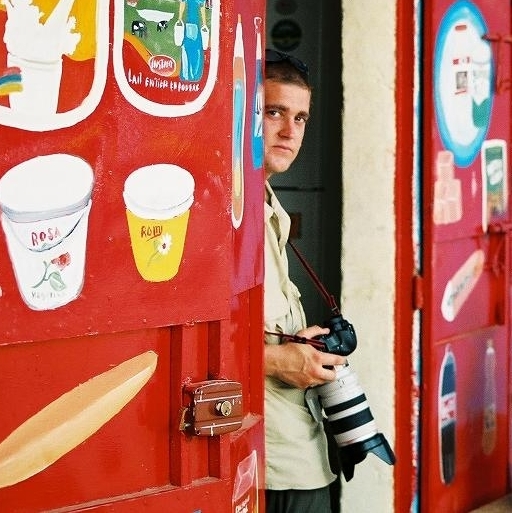
Brian Steidle
Brian Steidle was a US monitor attached to the African Union peacekeeping mission in Sudan. In 2004 he was sent to Darfur, where he witnessed horrendous crimes committed by fighters backed by the Sudanese Government. Brian has made a book and a film about Darfur to raise awareness of the genocide that took place there.
From 1999 – 2003 Brian Steidle was an officer (Captain) in the American Marines. After his service had finished he applied for a job as a US monitor attached to the African Union peacekeeping mission in the Sudan, Africa. The African Union is the equivalent of the EU in Africa. There had been decades of war in the Sudan between those people living in the north of the country and those living in the south. A ceasefire (pause in the fighting) had been agreed and international organisations and officials were sent to the Sudan to watch that the two sides kept to this agreement.
Sudan is the largest country in Africa but with a population that is spread out. Large areas of the northern part of the country are desert with spread out farming communities and only a few cities. The Sudan is at the top of Africa, and the river Nile runs from South Sudan, through the north up to Egypt. Competition for natural resources such as water and fertile land is common.
Steidle believed his job was easy out in the Sudan. He was in charge of a small team of three people that monitored and reported on the lives of the people living in the Nuba Mountains. The Nuba Mountains in the Southern part of Sudan were relatively peaceful. Steidle’s team was part of an international joint mission from the US, Canada and 12 European countries.
After seven months Steidle was promoted, it was September 2004 and he was sent to Darfur, a large region in the west of the Sudan. He was only 27 and although he was an ex soldier nothing prepared him for what was happening there. The war between the north and south of Sudan had been largely about natural resources, but it was also an ethnic conflict. The war was between the Arabs in the north and black Africans in the south. In the north there was also conflict between the Arab Muslims backed by the Sudanese government and black African Muslims.
‘I was blown away by what I saw [in Darfur], because nobody knew about it. Not even us, in the same country, 300km away.’
Steidle witnessed the killing of children, the massacre and destruction of villages, and the worse thing was that he couldn’t do anything to stop it. His role was as an observer – he was supposed to just take notes of what was happening, and was not allowed to interfere. In addition to the notes he took Steidle decided to take photographs. He collected lots of images that recorded the atrocities often only hours or days after they happened. In his notes he reported seeing Sudanese government supported troops leaving the major cities or bases fully armed with weapons that would be used on innocent civilians of all ages. He remembers how the African Union troops and his bosses in charge of the international joint mission did nothing to stop the attacks or to help those killed, injured or displaced as refugees. Instead it was left to the handful of aid groups in the region to try and do something after the event.
After a total of 13 months in the Sudan, Steidle finished his contract and decided to return to the United States.
‘I wanted to forget about it, go hide out in the woods. I thought I’d be watching this on CNN or the BBC, but it wasn’t there. So that’s when I thought, OK, let’s share it.’
Steidle had collected over 1000 photographs plus witness statements. He decided it was time to speak out. He went to journalists and to politicians.
‘Since I left Darfur …., I have tried, in press conferences, newspaper interviews and congressional testimony, to publicize conditions there in the hope that the international community will intervene more vigorously instead of watching the atrocities run their course.’
With the help of his sister he wrote a book about what he had seen and used the photographs that he had taken. The book was called The Devil Came on Horseback after the armed groups or militias that killed people. These armed groups often carried out the attacks whilst on horses.
Steidle made enough noise that events in Darfur became known to more people. He lobbied the US government and eventually the UN was forced into action including sanctions against the Sudanese government. In July 2010, Sudan’s president Omar al-Bashir was finally charged by the International Community for overseeing the genocide in Darfur (three counts of Genocide in Darfur by the International Criminal Court). However, Al-Bashir continues to resist arrest, despite having been removed from power in 2019. Over 300,000 people have been killed in Darfur and hundreds of thousands more have been made homeless.
Steidle’s book has been made into a film and he continues to talk about what he witnessed.
In July 2011, South Sudan became a country in its own right, however there are still reports of continued violence in Darfur and countrywide persecution and atrocities..
See some of Brian’s photographs of Darfur, which he has kindly given permission for us to use in our image library.
Image © Gretchen Steidle Wallace, via PublicAffairs Publishers